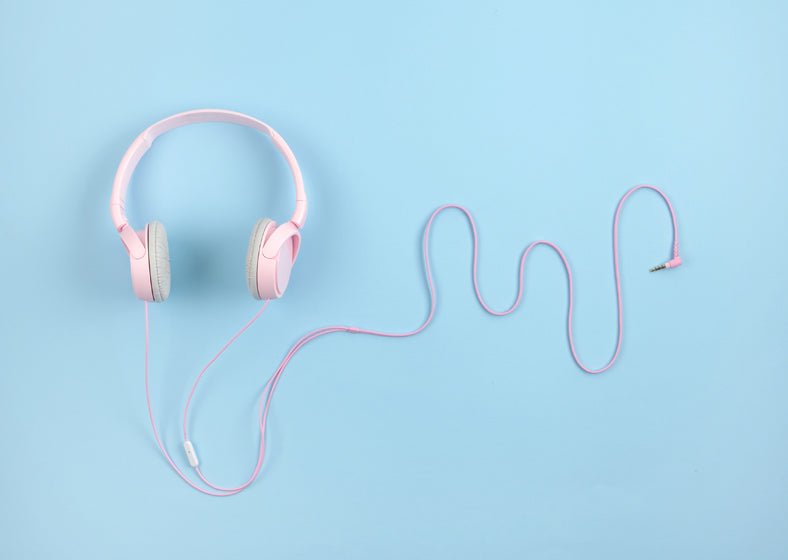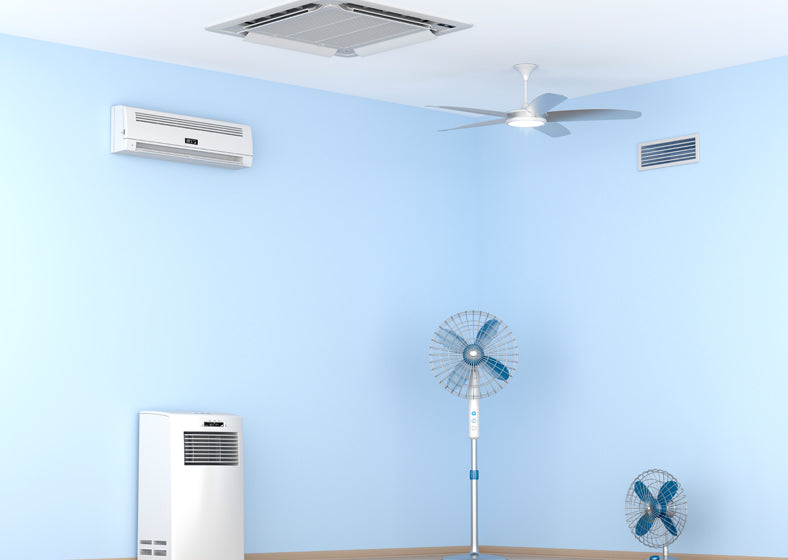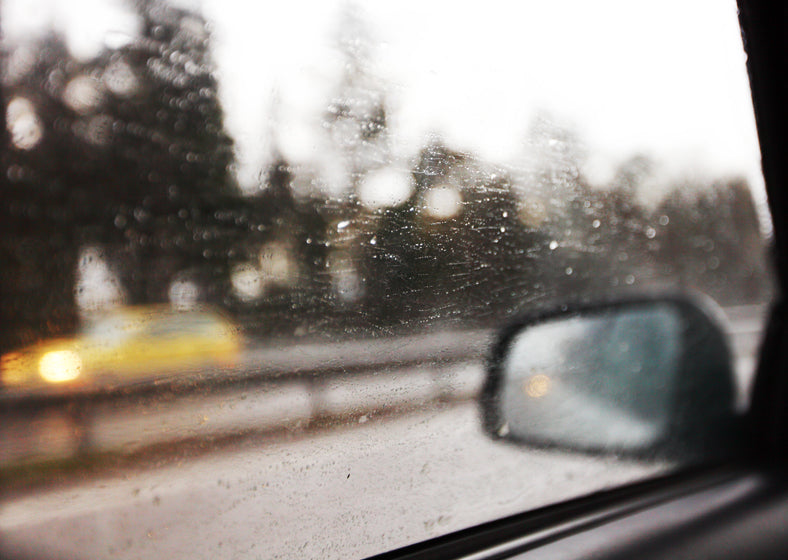No Products in the Cart
Chinmay Shankar, a dynamic writer and independent creative consultant in India, excels in copywriting, video production, advertising, and brand marketing. Read more
Last Updated November 11, 2024
Marwa Ismail is a nationally board-certified health coach who graduated from The Institute of Integrative Nutrition and holds a certificate in Functional Nutrition Coaching from MindBodyGreen. With a bachelor's degree in Psychology from UNC-Charlotte, she runs Figs and Olives Wellness, assisting clients in achieving health goals through lifestyle and nutrition changes. Marwa also works remotely for the Minneapolis Integrative Medicine Center. Read more
Have you ever wondered why your ears become hypersensitive to every sound as you sleep? That dripping faucet, that gurgling sound of your cat, a dog barking in the distance—all these sounds travel to your ear smoothly, which you might not notice during the daytime (or maybe too busy to notice).
It is because our brain remains sensitive to stimuli even during sleep (or during the onset of sleep). Beyond just sound, the brain also registers when someone switches on the light or touches your skin when you are in deep sleep. And if you ever woke up to the smell of freshly brewed coffee or bed tea, you know what we mean by that.
It might not be universal for everyone, as there are a range of sleepers - from heavy to light. Deep sleep or not, everyone needs a comfortable, restful environment from the onset to the moment they get into the REM sleep phase (deep phase). And sound plays an essential role in it.
This blog will explore how different noises can make your sleep better. Read on to learn more.

As you know, just like light, sound also has different frequencies. Just like your eyes perceive different colors of light, your ears can distinguish between different frequencies of sound. That explains why you like melody over symphony.
But that's music! What about noises? And why are they named like that? Well, to put it simply: noise is an assortment of different frequencies. There's no tuning or conscious effort about harmonizing it. Different sounds merge, leaving you with almost no thoughts - that's noise for you. And all the names for these noises come from other places, be they white, pink, or brown.
For example, we call it white noise because it is similar to white light in many ways. Just like all frequencies of light merge within the white light, so is the case with white noise. Therefore, all sound frequencies you can listen to come in equal measure in this noise category.

White noise could be anything - from a whirring fan to loud ACs to vacuum cleaners - all of these can produce white noise if the sound source is constant and repetitive in its tone.
One of the most recognizable white noises is the TV sound you used to hear before the TV station was plugged in or when your grandpa used to change radio stations on his transistor.

You can find pink noise in nature in a fairly common way. It has a low frequency and a softer note. Rustling leaves, steady rain, whooshing wind, and heartbeats are pink noises. In musical terms, you can call it flat or white noise with a bass. It is called pink because its sound frequencies match the similar light frequencies of the ones in the visible spectrum.

Brown noise is deeper and stronger at the low end. It has no high frequency and sounds like the river's current roar or strong winds, one of the many reasons why it is considered one of the most pleasant sounds in the world. Brown noise also improves focus, sleep, and helps you relax. Many research papers often use red as an interchangeable term for brown noise.
Now that you know what white noise is, the main question is how it helps you sleep.
Since it is a uniform sound and fuzzy in tone with no specific pitch, white noise is conducive to assisting babies to sleep. You can find a white noise machine with mixed lullabies, and the baby will feel calm and relaxed. In many studies, it has come out that such low-frequency sound also helps newborn and crying babies with their sleeping schedule.
It is also good for students who are looking to focus on their studies. As the texture of white noise is even and consistent, it blocks out any random noise, thus providing the concentration one needs in their study.

For working professionals, it can help them by reducing their ADHD symptoms, which they often face while working on a project. Even a single noise is enough to disrupt their flow status. White noise helps create a sonic wall between them and the world, thus letting them do what is urgent without interruption.
But one thing to be aware of when using a white noise system, be it an app, a machine, or your surroundings, is to keep it within 85 decibels. Sounds or noise higher than that can damage your inner ear system if listened to for extended periods.
That brings us to another concern. How much of it is enough? Especially for babies, the white noise level recommended by the American Academy of Pediatrics is around 50 decibels, with the distance of the sound source being 7 feet (200 centimeters).
For light sleeping adults, even a slight dripping noise or a car pulling back on the curb could be irritating enough to disturb sleep onset. Babies are for sure fussier than adults when it comes to sleep.
Consistent, random noises are better than sudden, loud noises. Especially for babies, if you have one in the house, you know how much sleep they need. But the good news is that babies can associate a particular sound with sleep and relaxation (in this case, it could be white noise or pink noise).

However, since a baby's eardrums are very sensitive, every loud noise becomes an assault on their senses. Remember to keep a safe distance between the baby and the machine so that they have no trouble sleeping.
Not all babies love it. Your 2-year old might need it more than the toddling 4-year old ones. So you can slowly try to wean them off. Healthy sleep habits start when they can get deep sleep without the help of a sound machine.
Let them face the sounds of the world. Even a ceiling fan is a good source of white noise. And like mentioned above, keep it within the right decibels.
Anything beyond 75 decibels is simply torturing. Vacuum machines and lawnmowers produce that amount of sound energy. But, of course, you wouldn't want a lawnmower whirring near your bed as you sleep, right?
Let your mind (and your baby's) get used to this sleep routine. And you will find that in less than 20 minutes of a white noise session, one can get into that coveted sleep. Gradually, you can build a relaxing routine and sleep hygiene that will prepare your mind for a night of better sleep.
Our brain is a curious machine. It adapts to its environment faster than you think. So if you are too dependent on white noise for your sleep, that might impact your brain negatively in the long term.
It's not like white noise is not good. In fact, many research studies have shown that white noise can help people learn new words and improve memory. The auditory equivalent of white light, this noise contains every frequency in muted sound, which further helps the brain's auditory center focus on the task at hand, be it your work or catching up on your sleep. In addition, a study has shown that white noise induces sleep while improving overall sleep quality.

But our brains, as we said above, work in mysterious ways. First of all, it craves information-rich signals even while listening. It could be a speech, a podcast, or simply your favorite genre of music. Every sound wave that comes with a piece of specific information (it could be a barking dog or the loud lawnmower of your neighbor) stimulates and alerts the brain.
But listening to more and more white noise can reduce the capability of your brain to filter out unnecessary noises. Eventually, your brain's ability to override will make it less sensitive to the repeated patterns of white noise. The point is that too much white noise can impact your synapses in ways you never imagined.
Before moving into the differences, let's look at what makes both noises similar. Both pink and white noises contain all frequencies audible to the human ear. Their point of difference appears only when they distribute their energies across frequencies. But why is pink noise called so? Because if you take the frequencies of pink noise and map them on the visible light spectrum, they will fall on the pink part of the visible spectrum, hence the name. Let’s take a look at both:
|
WHITE NOISE |
PINK NOISE |
|---|---|
|
Includes all the frequencies of the audible sound spectrum |
Also includes all of the frequencies but is more calming and gentle |
|
Equal distribution of all frequencies |
Deeper than white noise |
|
TV, radio static, whirring fans, wind, ventilation sound, heavy rains |
Heartbeats, waves on the shore, steady rainfall, rustling leaves |
|
Suitable for children or people with ADHD, it enhances learning and recall improve auditory working memory |
Not much effect on sleep quality, mood, or alertness when compared to white noise. |
|
Good for babies - less crying and increased sleep duration |
Good for adults - better work efficiency, working memory, and focused, continuous performance |
Since pink noise has lower frequency waves, it is more in tune with the natural system, like forests or waterfalls, and our internal system, like our brains. Even different parts of our brains (our nervous system) communicate in similar, lower frequency brain waves, like pink noise. The connection with nature and our internal systems is how pink noise feels more calming and soothing to us than the irritating static of white noise.

Even in nature, the sounds of leaves rustling and steady rainfall help us relax. You can call pink noise a flat or an even one in musical terms.
Pink noise is often used in neurostimulation because it has a lower pitch than white noise. That simply means listening to pink noise can improve your mood, let your muscles relax, enhance motivation and focus, and clear your brain fog. No wonder many studies reported that people felt happier and lighter after listening to such noise for a sustained period.
But that brings us to another concern: can one listen to these sounds for a long time without hearing issues? That's where pink noise comes to the rescue (because it is softer than white noise). And not just pink; even brown or red noise is also helpful in those terms. How? Let's find out.
Tinnitus is when you hear a constant ringing sound in your ears without a sound source nearby. Since brown noises are a bit brass-heavy and deeper than white noises, they can be a little rough on the ears. But once you get accustomed to brown noises like low-rumbling thunder and strong winds, they can really up your mood and help your tinnitus.

Yes, brown noise can decrease tinnitus and may remove it from the roots, as has been shown in many research studies.
You can plug in your earphones or a sound machine and find out which noise works best for you. It can be brown noise, pink noise, or white noise, depending on your sensibilities. But there is one more question. Or, we would rather call it a dilemma for people with sleep issues.
It isn't easy to say. Like diet and life, sleep choices are different for different people. Some like pin drop silence, and some prefer at least a humming of radio or TV in the background. Your sleep environment and daily routine can determine your nighttime sleep.

Sleeping in a quiet environment can help your heart and can boost the recovery of your brain rapidly while reducing the overall stress levels in your system. You can also be the 'silent sleeper' if you do not have any negative or stressful association with silence. You can switch off your devices, keep your books away, and be mindfully comfortable with your thoughts. Sleeping in silence feels like meditation if you do it properly.
Often, we tend to overdo it when it comes to sleep. Since we are already anxious, our nerves and brains go into overdrive mode. Quality sleep is out of the question now. Soon, you will be thinking about the life choices you made as a teenager and your future decisions, and how they will affect your next month's finances. In short, your brain will go to all the places and dig out memories that will keep you up at night. A bit of noise is helpful here, just to add comfort and calm down your brain activity. A better night's sleep comes from understanding the cause of your sleep disorders. There are many ways to create healthy sleep habits.
You distract the brain when you use a sound machine or phone app to listen to white and pink noise or any other noise of your liking. As you reduce the sensory inputs your mind craves when your body is at rest, you increase the possibility of drifting into a peaceful sleep.
White, pink, brown, or any kind of random, consistent noise adds texture and a routine to our sleep. A good, low humming frequency with proper volume masks sudden noises. It also slows down and regulates our brain waves, creating a more soothing and consistent scenario. This sheer exercise calms us down and prepares us for the onset of sleep without us even realizing it. That's the beauty of using the right kind of noise for your bedtime.
Related blog posts:
1. What to do When You Can’t Sleep?
2. How to Increase Deep Sleep?
5. Power Naps
Disclaimer: What is said in this article has been referenced from multiple sources and is intended only for educational and informational purposes. Please note that no content in this article is a substitute for professional advice from a qualified doctor or healthcare provider. Always consult an experienced doctor with any concerns you may have regarding a health condition or treatment, and never disregard any medical suggestions or delay in seeking treatment because of something you read here.
Notify me when available
We will send you a notification as soon as this product is available again.
We don't share your email with anybody


